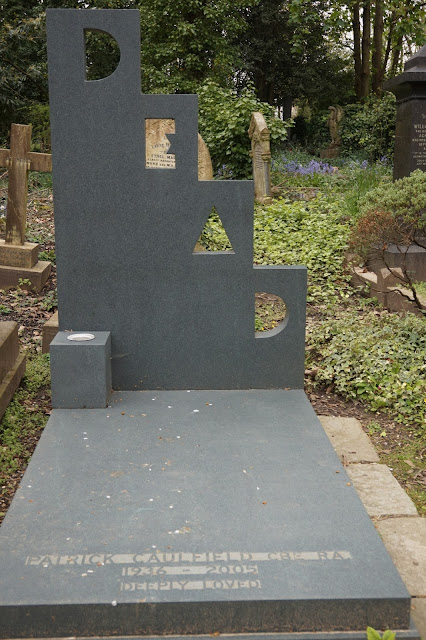 |
| Egyptian Avenue - West Cemetery Highgate |
Highgate Cemetery was opened in 1839. Before this time burial was typically done in the parish churchyard, but during the Industrial Revolution urban populations grew so quickly as to cause significant problems with many elements of infrastructure, including overcrowding in graveyards. This led to sanitation issues and epidemics as well as such things as coffins coming through the surface of churchyards and bursting open. Paris was ahead of London in dealing with these problems and opened Pere Lachaise Cemetery in 1804, and it was British visitors to Paris who were inspired to devote their time and money to canvass for such reform in London as well. Actually, the architect Sir Christopher Wren (1632-1723) had seen this problem coming and had suggested the founding of cemeteries outside the city, which was something that had been done in ancient Roman times, but for legal reasons during his time this wasn't possible. By 1839 it was more than a necessity! Seven such cemeteries were opened on the outskirts of London near the same time - The Magnificent Seven.
 |
| Circle of Lebanon |
 |
| "Tempus Fugit" |
 |
| Entrance to West Highgate - border between the land of the living and the land of the dead |
 |
| They just keep going and going! (East Highgate) |
This cemetery is absolutely beautiful! The grounds are a beautiful garden and have become somewhat of a wildlife sanctuary. But during the tour today I learned how fortunate we are to still have this jewel. So much destruction has taken place. First it was grave robbers and "resurrection men" (who would dig up freshly buried bodies to sell to medical schools). Then it was a bombing in WWII. Later there was a lot of vandalism (1960s and 1970s); the story of Highgate Vampire didn't help with that. In the 1960s there was a push to demolish it to make room for apartment complexes.
Eventually some community members formed Friends of Highgate and fought against the demolition and development of this sacred ground. They gathered funds and worked to clean up and restore the cemetery, which had been so neglected and vandalized. Tour money is now used for this ongoing work. Part of what struck me in learning all this, however, and in seeing so much of what I've seen here in Europe in general (including in the British Museum - Roman skeletons, Egyptian mummies no longer resting where they were laid) is that - and it makes me sad and horrified to say it - when we lay our dear ones to rest, and when we ourselves are laid to rest, and monuments are lovingly put in place, it maybe isn't as permanent as we might think or hope. Sorry to be maudlin about it, but that's the reality I came face-to-face with today, and I just kept thinking:
"Oh Lord haste the day
When my faith shall be sight
The clouds be rolled back as a scroll
The trump shall resound
And the Lord shall descend
Even so it is well with my soul."
Here are some individual tombs I found interesting:
 |
| Grave of Anna Mahler, sculptor, daughter of Gustav Mahler |
 |
| I love how pens and pencils are left at the grave of writer Douglas Adams |
 |
| Guess who?? |
 |
| Um . . . yep . . . |
 |
| Patrick Caulfield - tombstone sculpted by himself, result to the chagrin of the folks at the cemetery who gave permission |
 |
| "and having writ" does move on, as it has |
It seems appropriate to end with the tombstone of William Henry Monk - organist - and composer of "Eventide" the tune for the hymn "Abide with Me."
Abide with me; fast falls the eventide
The darkness deepens; Lord, with me abide;
When other helpers fail and comforts flee,
Help of the helpless, oh, abide with me.
Swift to its close ebbs out life's little day;
Earth's joys grow dim, its glories pass away;
Change and decay in all around I see
O Thou who changest not, abide with me.
I need Thy presence every passing hour;
What but Thy grace can foil the tempter's pow'r?
Who, like Thyself, my guide and stay can be?
Through cloud and sunshine, Lord, abide with me.
I fear no foe with Thee at hand to bless;
Ills have no weight, and tears no bitterness;
Where is death's sting? Where, grave, thy victory?
I triumph still, if Thou abide with me.
Hold Thou Thy cross before my closing eyes
Shine through the gloom and point me to the skies;
Heav'n's morning breaks, and earth's vain shadows flee;
In life, in death, O Lord, abide with me.












No comments:
Post a Comment